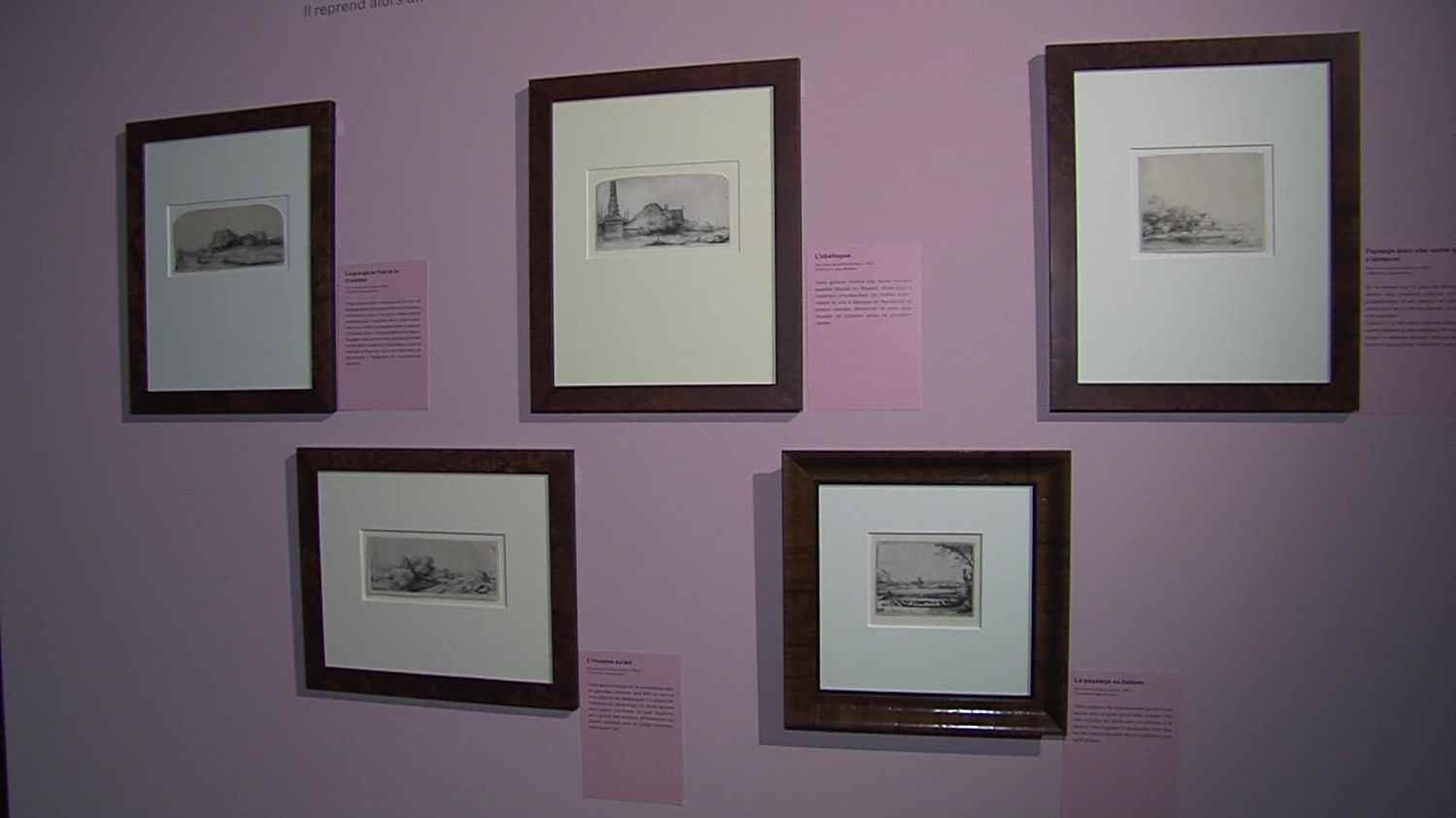“Landscapes” is the new temporary exhibition of the Rembrandt cabinet, installed in the premises of the Sainte-Cécile convent. Among the twelve prints exhibited, three are new acquisitions.
Since 2008, the Sainte-Cécile convent has housed the headquarters of the Glénat publishing house. In the former nuns’ parlour, the Glénat Fund for Heritage and Creation financed the Rembrandt cabinet, a museum space which brings together some forty engravings by Rembrandt (1606-1669). Temporary exhibitions regularly enrich this place. Until May 17, 2023, Landscapes is in the spotlight.
Realistic landscapes
For his exhibition Landscapes, the Rembrandt cabinet has benefited from a loan from a collector and is also presenting its three newly acquired works. Prints with a particularly realistic decoration and a luminous line. The Dutch artist was not interested in landscape for the first ten years of his career. It was in the 1630s that he began to draw in the middle of nature, near Amsterdam. At the end of this decade, he also executed a few oil landscapes, without however making them the main subject of his paintings.
In 1640, it’s the click. Rembrandt draws assiduously in the open air and produces engravings entirely dedicated to the landscapes of his country. Rembrandt conveys the atmosphere of the place by reproducing his model with precision. This is particularly the case of the work called The landscape with three trees. “In the background, you have a whole bunch of small details: Amsterdam perhaps in the distance, characters in the foreground, a small couple of lovers hiding in the grove” explains Aurélie Perret, in charge of exhibitions and collections for the Glénat Fund. This print, recently purchased by the Rembrandt studio, stands out from other landscape prints thanks to a special feature. “It’s the only one where Rembrandt drew a stormy sky, a bit dark where you can really feel that the clouds are coming and that the rain is starting to fall on the city that is in the distance” adds Aurélie Perret.
Rare engravings
Seeing prints by Rembrandt depicting landscapes is extremely rare. “Rembrandt’s technique means that there are probably only about thirty copies of each” reports Jacques Glénat, president of the Glénat Fund. “The Dutch are fond of their landscape with its thatched cottages, mills, etc. So you don’t find much of it in France and elsewhere” he adds. This is why the Glénat Fund had to turn to one of the greatest Dutch private collectors to complete its temporary exhibition. Japp Mulders lent nine prints. “It is not interesting if the engravings are in our cellar. I like the possibility of presenting them” he reports.
In parallel with this exhibition, the Glénat Fund also offers visitors the opportunity to discover around twenty paintings, also landscapes but from Grenoble and its region. Works signed by great names in painting such as Gustave Doré, Laurent Guétal, Isidore Dagnan or Alexandre Debelle.
Landscapes exhibition, Sainte-Cécile Convent, Rembrandt cabinet, 37 rue Servan in Grenoble, open Monday to Saturday from 10 a.m. to 12:30 p.m. and from 2 p.m. to 5:30 p.m.
